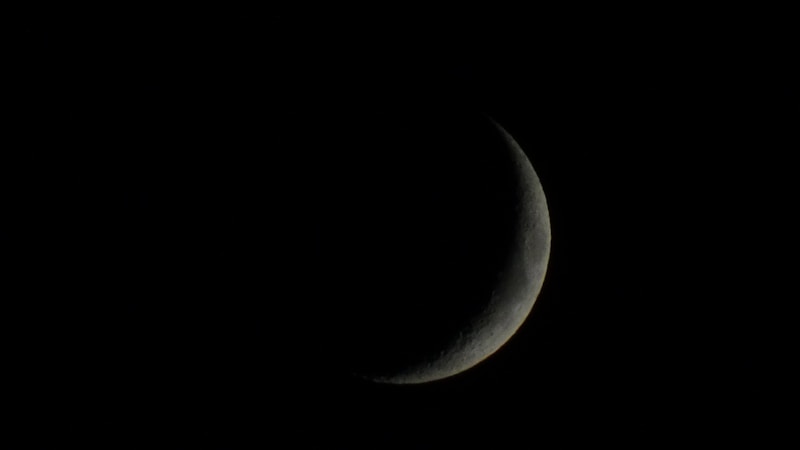9 Questions
What is the Cosmic Microwave Background (CMB)?
What is the temperature of the CMB?
What information does the CMB contain about the early universe?
What is the dipole moment of the CMB?
What is the significance of the discovery of the CMB?
What are the primary and secondary anisotropy of the CMB?
What is the CMB dipole?
What are the late-time anisotropy of the CMB?
What is the significance of the peaks of the CMB?
Summary
The Cosmic Microwave Background (CMB) is microwave radiation that fills all space and provides important data on the primordial universe. It was accidentally discovered in 1965 by American radio astronomers Arno Penzias and Robert Wilson. The CMB is a landmark evidence of the Big Bang theory for the origin of the universe. During the earliest periods of the universe, it was filled with an opaque fog of dense, hot plasma of sub-atomic particles. The recombination epoch released photons to travel freely through space – sometimes referred to as relic radiation. The CMB is not completely smooth and uniform, showing a faint anisotropy that can be mapped by sensitive detectors. The anisotropy structure is determined by various interactions of matter and photons up to the point of decoupling, which results in a characteristic lumpy pattern that varies with angular scale. Precise measurements of the CMB are critical to cosmology, since any proposed model of the universe must explain this radiation. The CMB frequency spectrum is expected to feature tiny departures from the black-body law known as spectral distortions. The cosmic microwave background radiation is an emission of uniform, black body thermal energy coming from all parts of the sky. The CMB dipole and aberration at higher multipoles have been measured, consistent with galactic motion. The CMB spectrum has become the most precisely measured black body spectrum in nature. The energy density of the CMB is 0.260 eV/cm3 which yields about 411 photons/cm3. The cosmic microwave background was first predicted in 1948 by Ralph Alpher and Robert Herman. The discovery of the CMB in the mid-1960s curtailed interest in alternatives such as the steady state theory. According to standard cosmology, the CMB gives a snapshot of the hot early universe at the point in time when the temperature dropped enough to allow electrons and protons to form hydrogen atoms.Overview of Cosmic Microwave Background Radiation
-
The cosmic microwave background radiation (CMB) is a remnant of the Big Bang and is the oldest electromagnetic radiation in the universe.
-
The CMB has a temperature of 2.725 K and is isotropic to one part in 100,000, indicating that the universe was once in a highly uniform state.
-
The CMB provides evidence for the Big Bang theory, as it is consistent with the idea that the universe began as a hot, dense state and has since cooled.
-
The anisotropy of the CMB is divided into primary and secondary anisotropy, which are caused by different physical processes.
-
The structure of the CMB anisotropies is determined by acoustic oscillations and diffusion damping, which give the CMB its characteristic peak structure.
-
The peaks of the CMB contain physical signatures that can be used to determine the curvature, baryon density, and dark matter density of the universe.
-
The CMB can distinguish between different types of density perturbations, providing support for inflation and ruling out many models of structure formation.
-
The CMB has been modified by several subsequent physical processes, collectively referred to as late-time anisotropy, including reionization, gravitational lensing, and the Sunyaev-Zeldovich effect.
-
The CMB is polarized at the level of a few microkelvin and has two types of polarization, called E-modes and B-modes.
-
Primordial gravitational waves are gravitational waves that could be observed in the polarization of the CMB and having their origin in the early universe, providing evidence for cosmic inflation.
-
Numerous CMB experiments have been conducted to measure and characterize the signatures of the radiation, including COBE, WMAP, and Planck.
-
The results of these experiments have provided increasingly precise measurements of the CMB and have helped to constrain various cosmological parameters, supporting the Big Bang theory and inflation.Analysis and Reduction of Cosmic Microwave Background Radiation Data
-
Planck mission data from 2015 revealed that the age of the universe is 13.799±0.021 billion years and the Hubble constant is 67.74±0.46 (km/s)/Mpc
-
Ground-based instruments like the South Pole Telescope, Clover Project, Atacama Cosmology Telescope, and QUIET telescope may provide additional CMBR data
-
Raw CMBR data from space vehicles like WMAP or Planck contain foreground effects that obscure the fine-scale structure of the CMBR background
-
Foreground effects like the dipole anisotropy caused by the Sun's motion, Earth's annual motion, and microwave sources must be subtracted out to reveal the fine-scale structure of the CMBR background
-
Analysis of CMBR data to produce maps, angular power spectrum, and cosmological parameters is a complicated, computationally difficult problem
-
Decomposing the map of the sky into spherical harmonics and applying the angular correlation function reduces the sum to an expression involving the multipole number and power spectrum term
-
Noise and foreground sources like galactic emissions and point sources must be removed to avoid distorting the CMB power spectrum's short-scale structure
-
Constraints on cosmological parameters can be obtained from their effects on the power spectrum using Markov chain Monte Carlo sampling techniques
-
The CMBR monopole term is the mean temperature of the CMB and is observed to have an average temperature of about 2.7255±0.0006 K
-
CMBR dipole represents the largest anisotropy, and its amplitude is around 3.3621±0.0010 mK
-
The CMB dipole is frame-dependent, and its spectrum has been confirmed to be the differential of a blackbody spectrum
-
The photon number density of a blackbody having the CMB monopole temperature is approximately 411 cm-3, and its energy density is approximately 0.260 eV/cm3 with a ratio to the critical density of 5.38 × 10-5.The Cosmic Microwave Background (CMB) is the thermal radiation left over from the Big Bang. The CMB is almost uniform in temperature, with small temperature variations that correspond to regions of slightly different densities in the early universe. The CMB was first predicted by George Gamow, Ralph Alpher, and Robert Herman in 1948. The CMB was discovered accidentally in 1964 by Arno Penzias and Robert Wilson, who were awarded the Nobel Prize in Physics in 1978 for their discovery. The CMB has a temperature of approximately 2.725 Kelvin (-270.42°C) and is observed in all directions in the sky. The CMB contains information about the early universe, such as the age of the universe, the composition of matter, and the rate of expansion. The dipole moment of the CMB is caused by the motion of the Earth relative to the CMB rest frame and does not encode any primordial information. The temperature variation at higher multipoles of the CMB is caused by perturbations in the density of the early universe. There have been claims of anomalies in the CMB, such as large scale anisotropies and non-Gaussian distributions, but the significance of these claims is debated. The CMB will continue to redshift until it is no longer detectable, and will be superseded by other background radiation fields in the far future of the universe. The discovery of the CMB has had significant implications for our understanding of the universe and has led to the development of the Big Bang model of cosmology. The CMB is a popular subject in science fiction, appearing in works such as The Big Bang Theory and Interstellar.
Description
Test your knowledge of the Cosmic Microwave Background (CMB) with our quiz! Learn about the history of its discovery, its importance in supporting the Big Bang theory, and how it can be analyzed and reduced to obtain cosmological parameters. Discover the different types of anisotropy in the CMB and how they provide information about the early universe, as well as the different experiments that have been conducted to measure and characterize the radiation. Challenge yourself to see how much you know about this landmark evidence of



